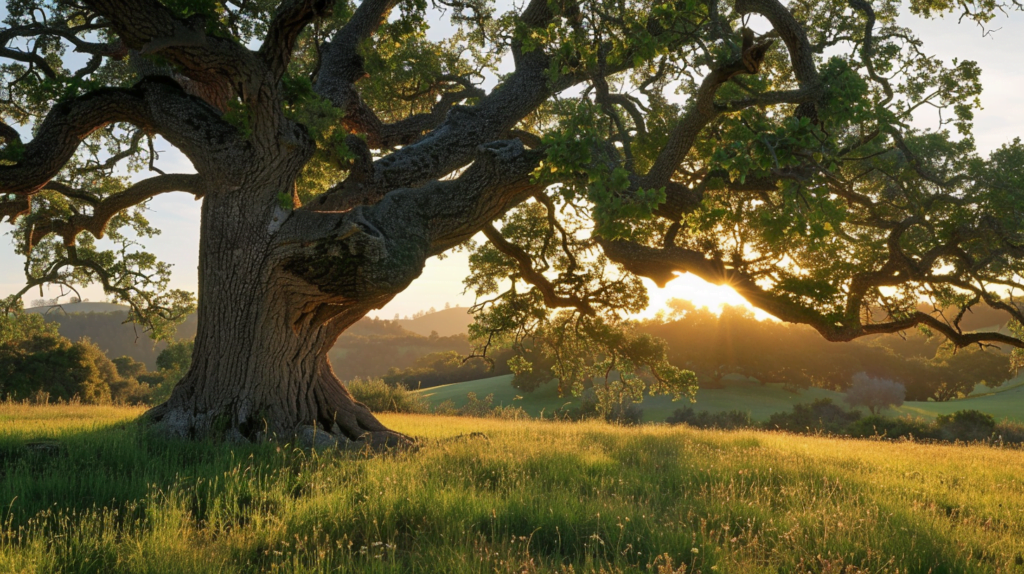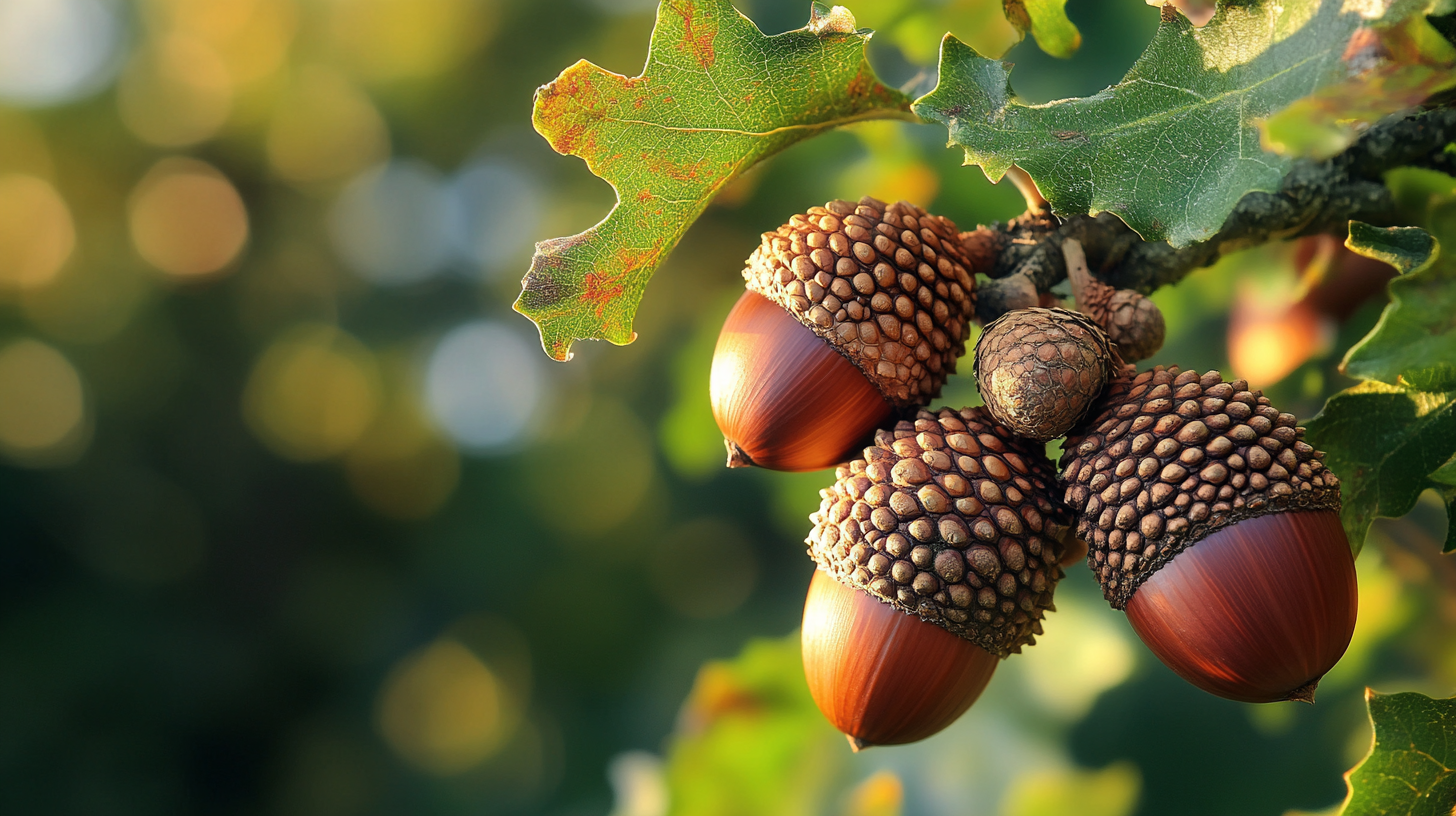Table of Contents
Oak trees are an integral part of California’s natural landscape, playing a crucial role in the state’s ecosystem. These majestic trees not only provide beauty and shade but also support diverse wildlife, maintain soil stability, and contribute to water conservation. However, various threats such as urban development, invasive species, and climate change have put oak trees at risk. In this comprehensive guide, we’ll explore the types of oak trees found in California, their ecological significance, the laws and regulations protecting them, and best practices for their conservation.
Types of Oak Trees Found in California
California is home to a variety of oak tree species, each with its unique characteristics and habitat preferences. Some of the most common types include:
- Coast Live Oak (Quercus agrifolia): This evergreen oak is found along the California coast and can live up to 250 years.
- Valley Oak (Quercus lobata): Also known as the California White Oak, this species is the largest of the North American oaks and can grow up to 100 feet tall.
- Blue Oak (Quercus douglasii): Found in the foothills of the Sierra Nevada and Coast Ranges, the Blue Oak is drought-tolerant and can live up to 400 years.
- Black Oak (Quercus kelloggii): This deciduous oak is found in mixed evergreen forests and is an important source of food for wildlife.
- Canyon Live Oak (Quercus chrysolepis): This evergreen oak is found in canyons and on steep slopes, and can live up to 300 years.
- Interior Live Oak (Quercus wislizeni): This drought-tolerant oak is found in the foothills and lower montane regions of California.
- Engelmann Oak (Quercus engelmannii): This rare oak species is found only in a small area of Southern California and is considered endangered.
- Oracle Oak (Quercus x morehus): This hybrid oak is a cross between the Black Oak and the Interior Live Oak and is found in the Sierra Nevada foothills.
The Ecological Significance of Oak Trees in California
Oak trees play a vital role in California’s ecosystem, supporting a wide range of flora and fauna. Acorns, the nuts produced by oak trees, are a critical food source for many wildlife species, including squirrels, deer, and various bird species. The canopies of oak trees also provide shelter and nesting sites for numerous animals.
In addition to their wildlife value, oak trees help maintain soil stability and prevent erosion. Their deep root systems hold the soil in place, reducing the risk of landslides and soil degradation. Oak trees also contribute to water conservation and groundwater recharge by intercepting rainfall and allowing it to slowly percolate into the soil.
Furthermore, oak trees hold cultural and historical significance for many Native American tribes in California. Acorns were a staple food source for these communities, and oak trees were often considered sacred and central to their spiritual beliefs and practices.
Threats to Oak Trees in California
Despite their importance, oak trees in California face numerous threats. Some of the most significant challenges include:
- Urban development and land-use changes: As cities and towns expand, oak woodlands are often cleared for construction, leading to habitat loss and fragmentation.
- Invasive species and diseases: Non-native plants and pathogens, such as Sudden Oak Death (caused by Phytophthora ramorum), can decimate oak populations.
- Climate change and drought: Increasing temperatures and prolonged periods of drought stress oak trees, making them more susceptible to disease and insect infestations.
- Overgrazing and improper land management practices: Excessive livestock grazing can damage oak seedlings and saplings, hindering regeneration.
- Wildfire risks and post-fire regeneration challenges: While oak trees are adapted to periodic fires, intense wildfires can destroy mature trees and limit their ability to regenerate.
California’s Oak Woodlands Conservation Act
Recognizing the importance of oak trees and the threats they face, California enacted the Oak Woodlands Conservation Act in 2001. This legislation aims to protect and conserve oak woodlands by providing incentives and resources for their preservation and restoration.
The act establishes the Oak Woodlands Conservation Fund, which provides grants to landowners, conservation organizations, and local governments for oak woodland conservation projects. These projects may include land acquisition, conservation easements, restoration, and education and outreach efforts.
Under the act, counties are required to consider the impacts of development projects on oak woodlands and mitigate any significant effects. Developers must provide a minimum of 2:1 mitigation for any oak woodlands removed, either through on-site or off-site conservation, restoration, or payment into the Oak Woodlands Conservation Fund.
Other Laws and Regulations Protecting Oak Trees in California
In addition to the Oak Woodlands Conservation Act, several other laws and regulations help protect oak trees in California:
- California Environmental Quality Act (CEQA): This law requires state and local agencies to identify and mitigate the significant environmental impacts of their actions, including impacts on oak woodlands.
- Local tree ordinances and heritage tree programs: Many cities and counties in California have adopted ordinances that protect oak trees and other significant trees from removal or damage. Some jurisdictions also have heritage tree programs that recognize and protect individual trees of exceptional size, age, or historical significance.
- Endangered Species Act: While no oak species in California are currently listed as threatened or endangered under the federal Endangered Species Act, this law provides protection for species that may be listed in the future.
- California Native Plant Protection Act: This act allows the California Department of Fish and Wildlife to designate native plants, including oak trees, as rare or endangered and prohibits their removal or destruction.
Best Practices for Protecting and Conserving Oak Trees
To ensure the long-term survival and health of California’s oak trees, it is essential to adopt best practices for their protection and conservation. Some key strategies include:
- Proper tree care and maintenance: Regular pruning, watering, and mulching can help keep oak trees healthy and resilient to stress and disease.
- Sustainable land management and development practices: Developers and landowners should strive to minimize impacts on oak woodlands by clustering development, preserving mature trees, and maintaining wildlife corridors.
- Supporting oak tree restoration and reforestation efforts: Planting oak seedlings and saplings in suitable habitats can help restore degraded woodlands and ensure the long-term viability of oak populations.
- Educating the public about the importance of oak trees: Raising awareness about the ecological, cultural, and aesthetic values of oak trees can foster a sense of stewardship and encourage community involvement in conservation efforts.
- Participating in citizen science and monitoring programs: Engaging the public in data collection and monitoring can help track the health and distribution of oak trees and inform conservation strategies.

FAQs About Oak Tree Protection in California
- Are all oak trees protected in California?
While not all oak trees are individually protected, the Oak Woodlands Conservation Act and other laws and regulations provide varying degrees of protection for oak woodlands and significant oak trees. - What should I do if I need to remove an oak tree on my property?
Check with your local city or county planning department to determine if there are any tree removal permits or mitigation requirements. In many cases, you may need to provide justification for the removal and/or replace the tree. - How can I tell if an oak tree is healthy or diseased?
Signs of a healthy oak tree include full, green canopies, strong branch structure, and absence of visible damage or decay. Diseased trees may exhibit symptoms such as leaf discoloration, dieback, fungal growth, or presence of insect pests. - What are the penalties for illegally removing or damaging protected oak trees?
Penalties vary depending on the jurisdiction and the specific law or regulation violated. They may include fines, required mitigation or restoration, and even criminal charges in severe cases. - How can I get involved in oak tree conservation efforts in my community?
Consider volunteering with local conservation organizations, participating in tree planting events, and supporting oak woodland preservation initiatives. You can also advocate for strong oak tree protection policies and educate others about the importance of these iconic trees.
Conclusion
Oak trees are a vital component of California’s natural heritage, providing immense ecological, cultural, and aesthetic benefits. However, these majestic trees face significant threats from urban development, invasive species, climate change, and other factors. By understanding the laws and regulations that protect oak trees, adopting best practices for their conservation, and actively engaging in preservation efforts, we can ensure that California’s oak woodlands continue to thrive for generations to come.




